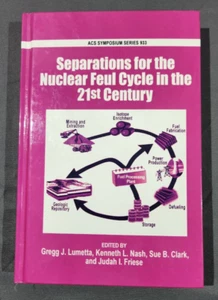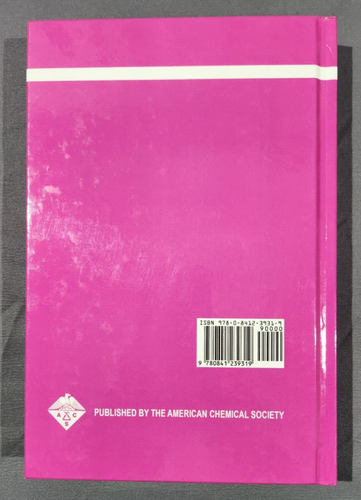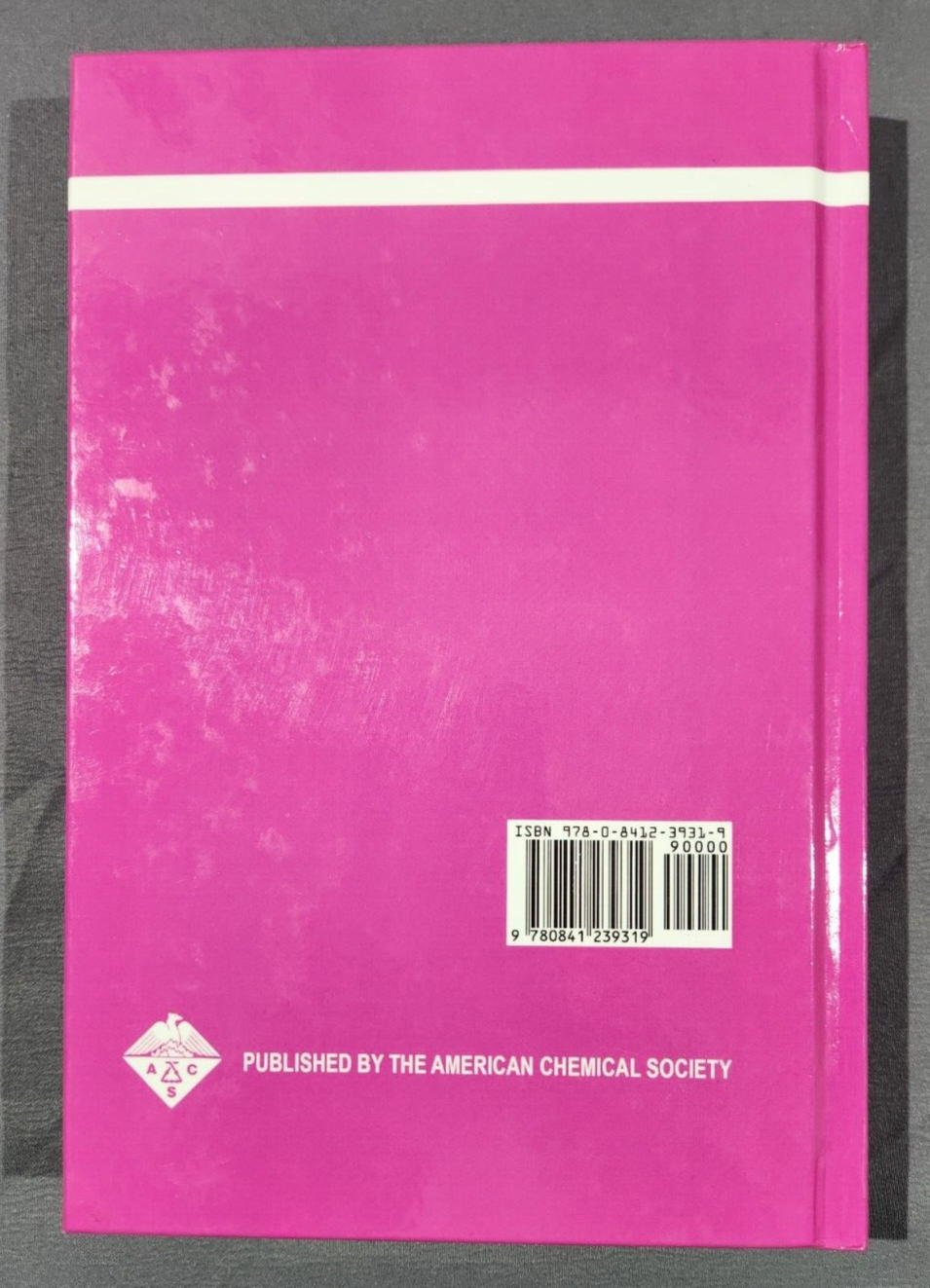Picture 1 of 7







Gallery
Picture 1 of 7







Have one to sell?
Acs Symposium Ser.: Separations for the Nuclear Fuel Cycle in the 21st...
US $99.99
ApproximatelyS$ 128.02
or Best Offer
Condition:
Very Good
A book that has been read but is in excellent condition. No obvious damage to the cover, with the dust jacket included for hard covers. No missing or damaged pages, no creases or tears, and no underlining/highlighting of text or writing in the margins. May be very minimal identifying marks on the inside cover. Very minimal wear and tear.
Oops! Looks like we're having trouble connecting to our server.
Refresh your browser window to try again.
Shipping:
Free USPS Priority Mail Medium Flat Rate Box®.
Located in: Ponca City, Oklahoma, United States
Delivery:
Estimated between Thu, 17 Jul and Tue, 22 Jul to 94104
Returns:
30 days return. Buyer pays for return shipping. If you use an eBay shipping label, it will be deducted from your refund amount.
Coverage:
Read item description or contact seller for details. See all detailsSee all details on coverage
(Not eligible for eBay purchase protection programmes)
Seller assumes all responsibility for this listing.
eBay item number:276816636446
Item specifics
- Condition
- ISBN
- 9780841239319
About this product
Product Identifiers
Publisher
American Chemical Society
ISBN-10
0841239312
ISBN-13
9780841239319
eBay Product ID (ePID)
51583177
Product Key Features
Number of Pages
360 Pages
Publication Name
Separations for the Nuclear Fuel Cycle in the 21st Century
Language
English
Subject
Power Resources / Nuclear, General
Publication Year
2006
Type
Textbook
Subject Area
Technology & Engineering
Series
Acs Symposium Ser.
Format
Hardcover
Dimensions
Item Height
0.9 in
Item Weight
19.4 Oz
Item Length
6.2 in
Item Width
9.1 in
Additional Product Features
Intended Audience
College Audience
LCCN
2005-057229
Dewey Edition
22
Series Volume Number
No. 933
Illustrated
Yes
Dewey Decimal
621.48/335
Table Of Content
Current Trends and Direction to the Future1: Kenneth L. Nash, Gregg J. Lumetta, Sue B. Clark, Judah Friese: Significance of the Nuclear Fuel Cycle in the 21st Century2: Kenneth L. Nash: Twenty-first Century Approaches to Actinide Partitioning3: T. A. Todd and R. A. Wigeland: Advanced Separation Technologies for Processing Spent Nuclear Fuel and the Potential Benefits to a Geologic Repository4: Chien M. Wai: Reprocessing Spent Nuclear Fuel with Supercritical Carbon DioxideAqueous Processing5: Allen J. Bakel, Delbert L. Bowers, Kevin J. Quigley, Monica C. Regalbuto, John A. Stillman, and George F. Vandegrift: Dissolution of Irradiated Nuclear Fuel from the Big Rock Point Reactor6: O. D. Fox, C. J. Jones, J. E. Birkett, M. J. Carrott, G. Crooks, C. J. Maher, C. V. Roube, R. J. Taylor: Advanced PUREX Flowsheets for Future Np and Pu Fuel Cycle Cemands7: Stuart T. Arm1 and Jon A. Jenkins: Haze Formation and Behavior in Liquid-Liquid Extraction Processes8: J. Plaue, S. Goeury, J. Petchsaiprasert, M. Draye, J. Foos, and K. Czerwinski: Comparison of Uranyl Third Phase Formation in 30% TBP/Nitric Acid in Dodecane and HPT Using UV-Visible Spectroscopy9: R. Chiarizia, M. P. Jensen, M. Borkowski, and K. L. Nash: A New Interpretation of Third Phase Formation in the Solvent Extraction of Actinides by TBP10: Mark D. Ogden, Jun Jiang, Iain May, Mark J. Sarsfield, and Phil Mayhew: The Interaction of Ammonium Carbamate with Uranyl and Molybdenum Containing Species Derived from PUREX Processing11: Glenn A. Fugate and James D. Navratil: Plutonium Peroxide12: Don Mullins, Gordon Jarvinen, Michael Mayne, Doris Ford, Kristy Long, Heidi Reichert, Phillip Palmer, C. Drew Tait, D. Webster Keogh, Pamela Gordon: Crystallization of Uranium Complexes for Partitioning of Spent Nuclear FuelEmerging Separations Systems13: Gregg J. Lumetta,, Bruce K. McNamara, Timothy L. Hubler, Dennis W. Wester, Jun Li, and Stan L. Latesky: Potential Application of Kläui Ligands in Actinide Separations14: A.I. Bhatt, H. Kinoshita, A.L. Koster, I. May, C. Sharrad, H.M. Steele, V.A. Volkovich, O.D. Fox, C.J. Jones, B.G. Lewin, J.M. Charnock and C. Hennig: Actinide, Lanthanide and Fission Product Speciation and Electrochemistry in Ionic Melts15: Dominique C. Stepinski, Blake A. Young, Mark P. Jensen, Paul G. Rickert, Julie A. Dzielawa, Andrew A. Dilger, David J. Rausch, and Mark L. Dietz: Application of Ionic Liquids in Actinide and Fission Product Separations: Progress and ProspectsActinide/Lanthanide Separations16: Dean R. Peterman, Jack D. Law, Terry A. Todd, and Richard D. Tillotson: Use of Cyanex-301 for Separation of Am/Cm From Lanthanides in an Advanced Nuclear Fuel Cycle17: T. Matsumura and K. Takeshita: Extraction Separation of Am(III) and Eu(III) with TPEN Isomers and Decanoic AcidSolution-Solid Interactions18: Sarah E. Pepper, Brienne N. Bottenus, Larry C. Hull, Carrie G. Shepler and Sue B. Clark: The Influence of Simple Erganic Ligands on the Partitioning Mechanism of Trivalent Lanthanum to Goethite19: Judah I. Friese, Matthew Douglas, James L. Jerden, Jr.: Neptunium Association with Selected Uranyl Phases Anticipated in the Yucca Mountain Repository20: onald E. Wall, Nathalie A. Wall, and Laurence H. Brush: Speciation and Solubility Modeling of Actinides in the Waste Isolation Pilot Plant
Synopsis
This book constitutes the proceedings from a symposium titled Separations for the Nuclear Fuel Cycle in the 21st Century which was held in March 2004. This symposium focused on assessing the current state-of-the art in nuclear separations science and technology, and on identifying R&D directions required to enable nuclear separations to meet 21st Century demands for waste minimization, environment protection, safety, and security. Several recent developmentshave elevated the importance of this topic including: the potential effects of global warming caused by carbon dioxide emissions from burning of fossil fuels; rising demand for the electric power that isneeded to raise the global standard of living; geopolitical issues such as those related to nuclear proliferation and nuclear terrorism. Although expansion of fission-based nuclear power would help reduce the potential for global warming, future development of the nuclear fuel cycle must be weighed against the issues of proliferation and management of irradiated fuel. Separations will play a central role in addressing these issues. The subject matter of this book is organized into five topicalareas. These are: 1) current trends and direction to the future, 2) aqueous processing, 3) emerging separations systems, 4) actinide/lanthanide separations, and 5) solution-solid interactions. Thiscollection of papers provides a snapshot of the current state of nuclear separations chemistry and can be used to help guide future directions in this critical technological field., This book constitutes the proceedings from a symposium titled Separations for the Nuclear Fuel Cycle in the 21st Century which was held in March 2004. This symposium focused on assessing the current state-of-the art in nuclear separations science and technology, and on identifying R&D directions required to enable nuclear separations to meet 21st Century demands for waste minimization, environment protection, safety, and security. Several recent developments have elevated the importance of this topic including: the potential effects of global warming caused by carbon dioxide emissions from burning of fossil fuels; rising demand for the electric power that is needed to raise the global standard of living; geopolitical issues such as those related to nuclear proliferation and nuclear terrorism. Although expansion of fission-based nuclear power would help reduce the potential for global warming, future development of the nuclear fuel cycle must be weighed against the issues of proliferation and management of irradiated fuel. Separations will play a central role in addressing these issues. The subject matter of this book is organized into five topical areas. These are: 1) current trends and direction to the future, 2) aqueous processing, 3) emerging separations systems, 4) actinide/lanthanide separations, and 5) solution-solid interactions. This collection of papers provides a snapshot of the current state of nuclear separations chemistry and can be used to help guide future directions in this critical technological field., This book focuses on assessing the current state-of-the art in nuclear separations science and technology, and on identifying R&D directions required to enable nuclear separations to meet 21st Century demands for waste minimization, environment protection, safety, and security.
LC Classification Number
TK9360.S435 2006
Item description from the seller
Seller feedback (141)
- 4***m (258)- Feedback left by buyer.Past 6 monthsVerified purchaseAll okRadiation Detection and Measurement by Glenn F. Knoll (2010, Hardcover) (#276696302466)
- t***s (10)- Feedback left by buyer.Past yearVerified purchaseItem arrived in good condition as advertised.Basic Health Physics by Bevelacqua, Joseph John (#276696336694)
- h***9 (9)- Feedback left by buyer.Past yearVerified purchaseItem was received just as advertised.TSI VelociCheck Model 8330 Air Velocity Model, Tested (#274391759406)

